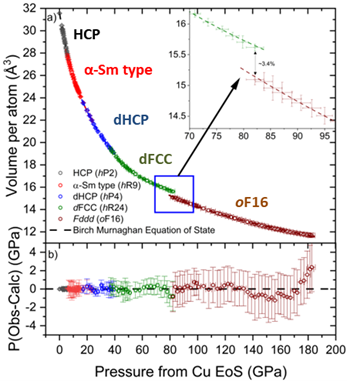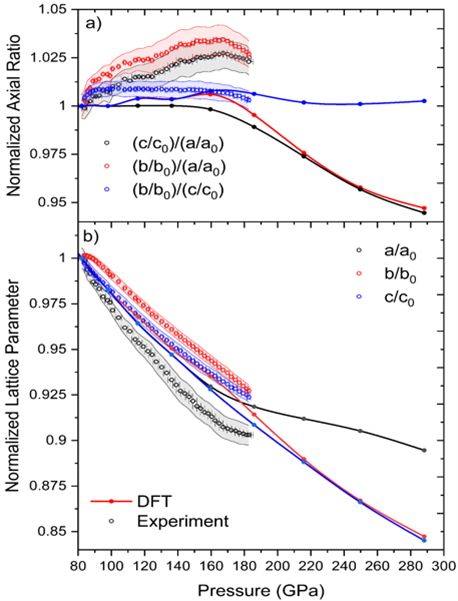High-pressure structural systematics of dysprosium metal compressed in a neon pressure medium to 182 GPa

A team of scientists from the Condensed Matter Section, Physics Division, of LLNL and HPCAT at the Advanced Photon Source have investigated the response of the heavy rare-earth metal dysprosium under static compression in a soft pressure medium up to 182 GPa. In this study, both the pressure-volume relationship and the lattice parameter response of pure dysprosium metal was explored. The lattice parameters of each of the high-pressure polymorphs showed an anisotropic response to compression, as well as turning points in the anisotropy, which can be attributed to an electronic topological phase transition driven by changes to the s and d electron orbitals. By employing the soft pressure transmitting medium Ne, it was possible to obtain very high-quality powder diffraction data and extract trends in the axial ratios not reported before, showing how crucial the use of a soft pressure medium is to ensure that the sample undergoes as close to hydrostatic compression as possible.
Furthermore, the team observed trends in the collapsed phase of dysprosium that had not been reported before, inspiring a theoretical exploration of a possible phase transition at pressures not yet achieved in experimental studies on the heavy rare-earth metals. Density functional theory (DFT) calculations were able to both verify the compression behavior seen in the experimental data and show that dysprosium may undergo a polytypic phase transition from the 8-layered orthorhombic structure with 16 atoms per unit cell (oF16) to a 4-layered orthorhombic structure with 8 atoms per unit cell (oF8), showing that there is still much to understand about the f-block elements.

For more information, see: D. T. Sneed, P. Söderlind, E. F. O’Bannon, III, H. Cynn, D. Smith, J. S. Smith, C. Park, and Zs. Jenei - High-pressure structural systematics of dysprosium metal compressed in a neon pressure medium to 182 GPa, Phys. Rev. B 105, 214110 DOI: https://doi.org/10.1103/PhysRevB.105.214110
